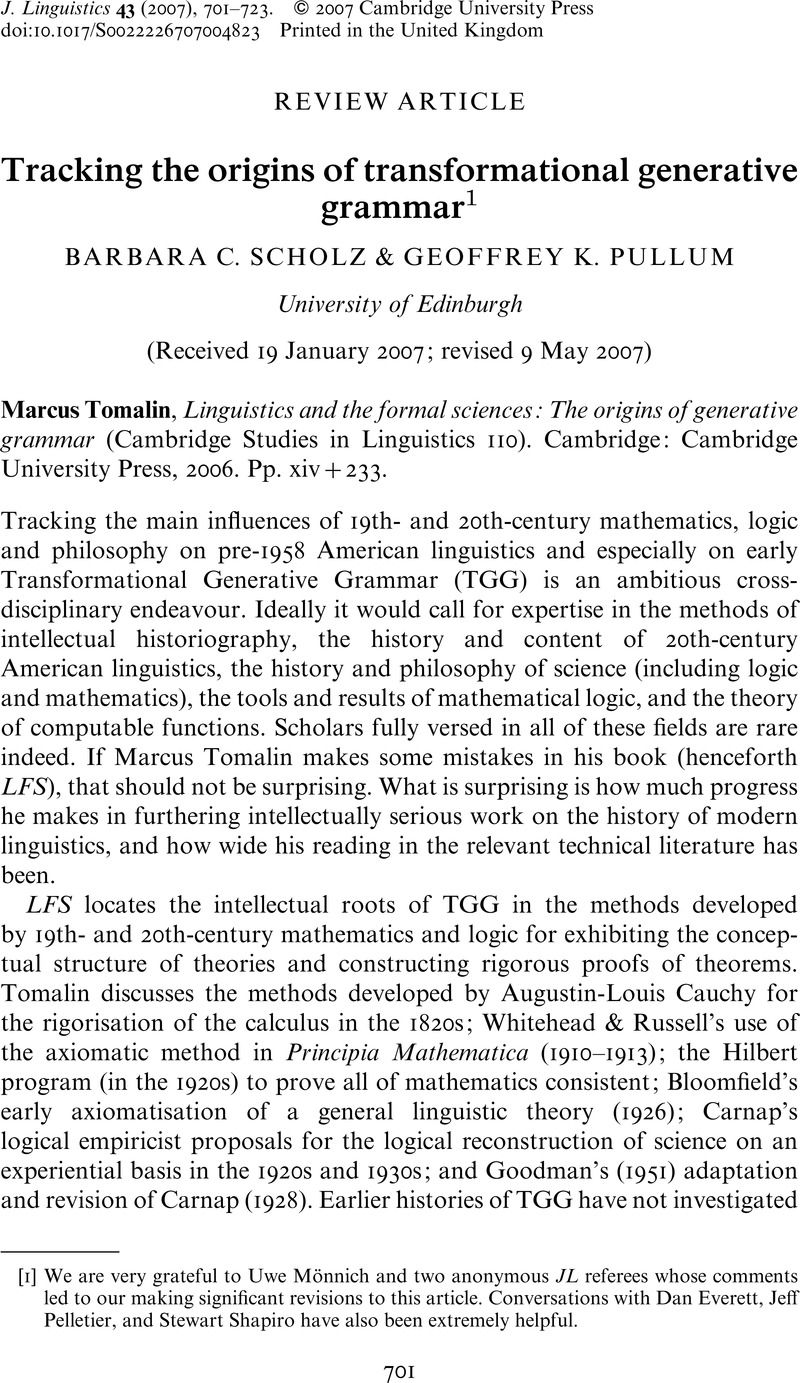Crossref Citations
This article has been cited by the following publications. This list is generated based on data provided by Crossref.
2011.
The Handbook of Phonological Theory.
p.
779.
Pullum, Geoffrey K.
2011.
On the Mathematical Foundations of Syntactic Structures.
Journal of Logic, Language and Information,
Vol. 20,
Issue. 3,
p.
277.
Lasnik, Howard
and
Uriagereka, Juan
2012.
Philosophy of Linguistics.
p.
33.
Martin-Nielsen, Janet
2012.
Cold War Social Science.
p.
63.
Nefdt, Ryan M.
2020.
The Philosophy and Science of Language.
p.
215.
Nefdt, Ryan M.
2021.
Structural realism and generative linguistics.
Synthese,
Vol. 199,
Issue. 1-2,
p.
3711.
2021.
Aux origines des sciences humaines.
p.
865.
Léon, Jacqueline
2021.
Automating Linguistics.
p.
69.
Nefdt, Ryan Mark
2024.
Pullum’s philosophy of linguistics: towards a unified framework.
Journal of Linguistics,
p.
1.



